
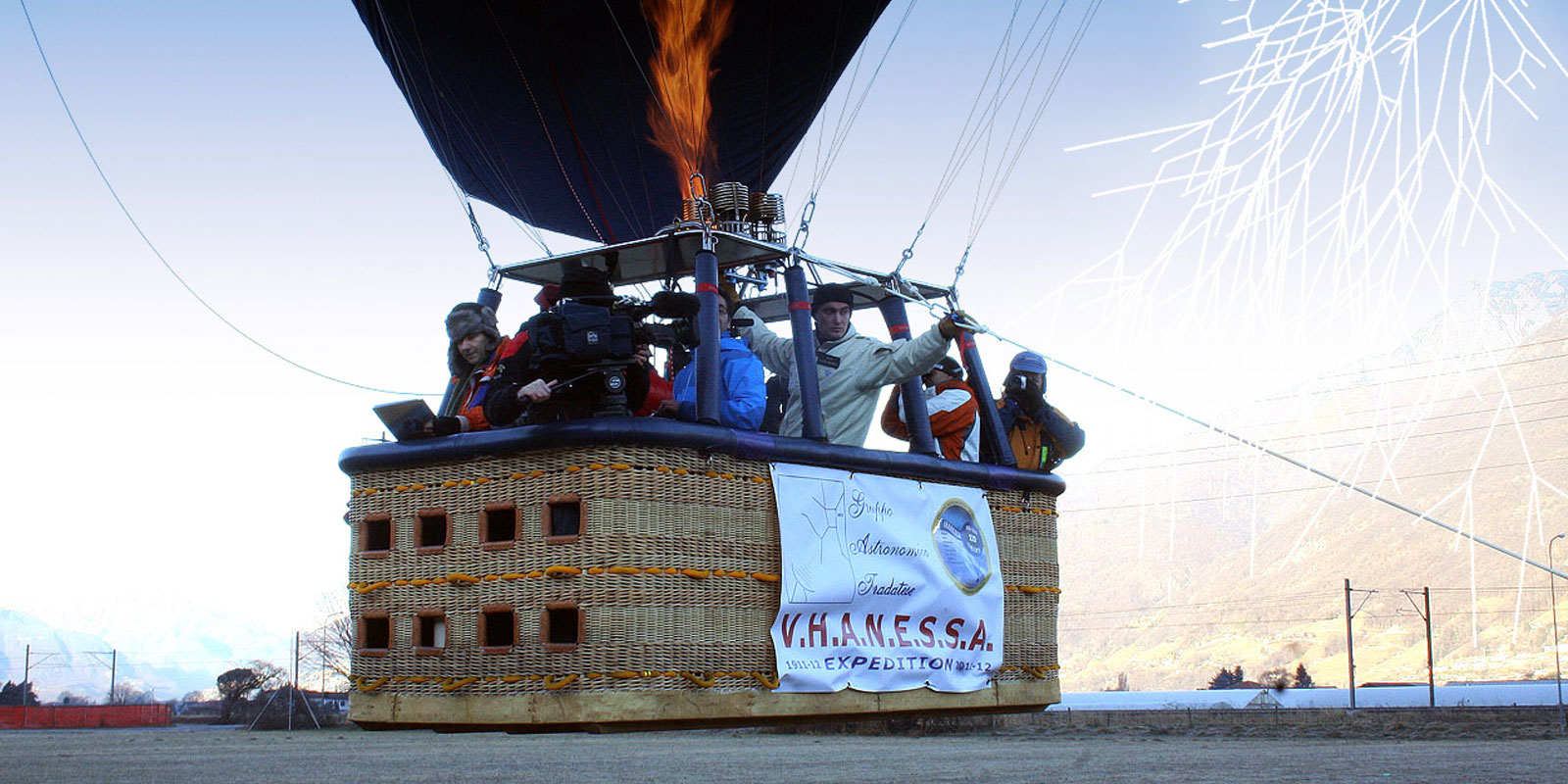
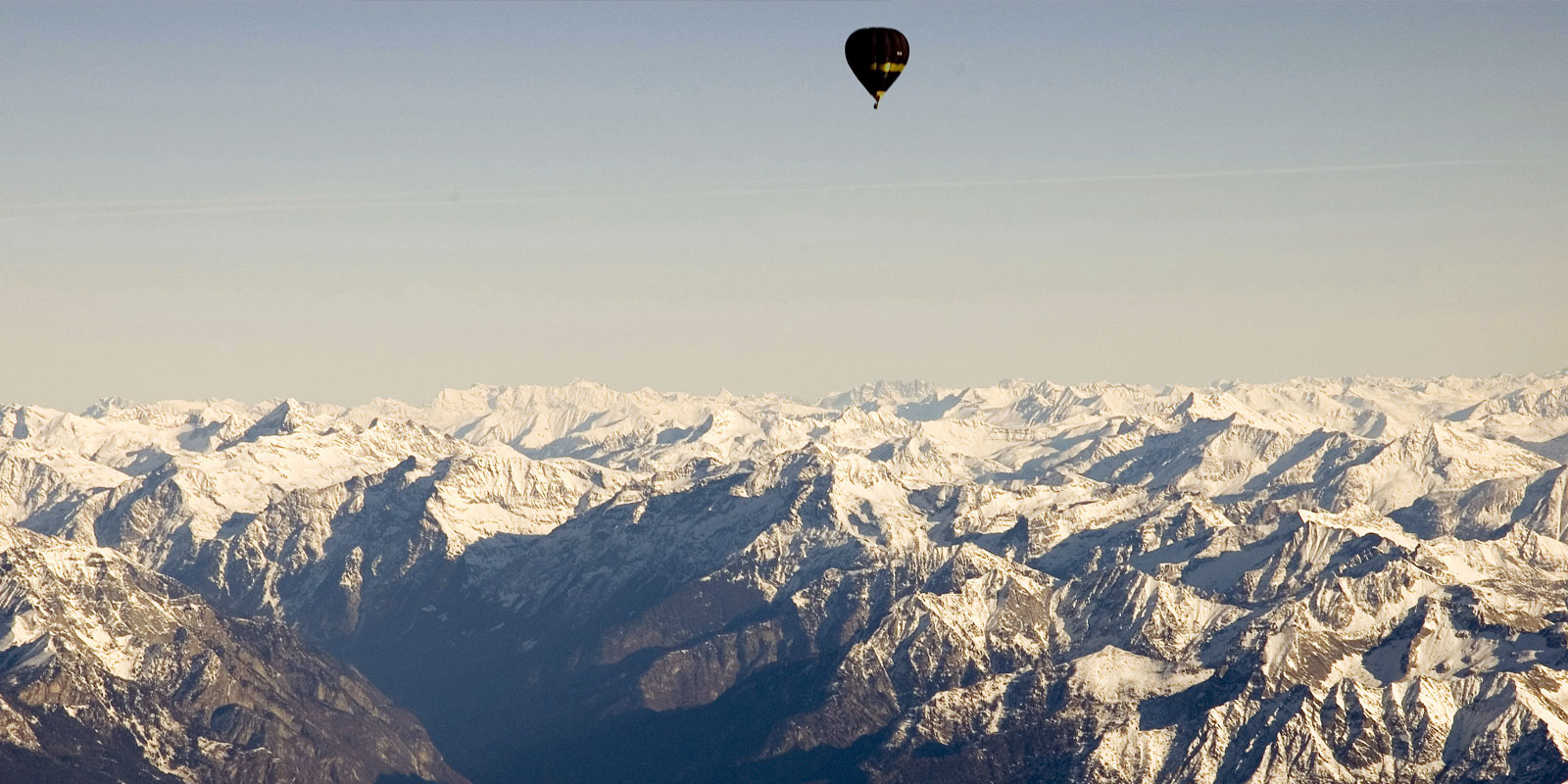

Listen to the podcast about cosmic rays and the VHANESSA expedition.
The 1911 was a year of great importance for physics and astrophysics: Ernest Rutherford demonstrated by means of alpha particle beams, the existence of the proton, and proposed the theory of the atom as we know it today, based on idea of electrons orbiting a nucleus. In the same year Victor Hess, Austrian physicist, had realized that a strange radiation detected on the ground could come from space.
Armed with only some particular electroscopes made its research with air balloons, taking off for the first time in 1911. Through his surveys, showed that the radiation increased with altitude: so he discovered cosmic rays, publishing his work on 7 August 1912.
A discovery that caused him to award the 1936 Nobel prize for physics.
We can therefore say that particle and astro-particles physics are born in the same year. Rutherford had introduced the idea of beams of particles colliding with atoms, a principle which is virtually unchanged and led to the development of machines like the LHC at CERN. Hess had instead triggered a search that has seen a great evolution of methods of investigation.
Scientific aim
The purpose of the expedition VHANESSA (short for Victor Hess Airballoon new expedition searching signal of astroparticles) unique in Italy and Europe, and supported by G.A.T. (Gruppo Astronomico Tradatese), was to celebrate the centenary of the discovery by Victor Hess.
An ascentional balloon (hot-air-balloon) carryed the pilot, two GAT exponents and a pletora of journalists reached almost 6000 AMSL. The balloon was equipped to perform dosimetric measurements of ionizing radiation in the atmosphere at high altitudes.
The expedition started from St. Antonino (CH) (in Lombardy is impossible to make flights at high altitude), measurements on board the balloon VHANESSA was carried out approximately every 1000 m of altitude as did V. Hess; using two Geiger counters, two muon detectors and an electroscope (purely symbolic but working). Unlike from what knew the Austrian physicist, we had the advantage to know what we was measuring. The expedition has had therefore a great historical and reminiscent value. It was be interesting to compare the measurements with both historical data and with more recent ones.
Backgroun sound aboard on VHANESSA:
The bips of one of the instruments rappresent the particles crossing, here at 3000m.
Click su play per ascoltare l'audio.
Forecast:
The number of muons from sea level up to 11-15 km, where the muons are pions fellow, progressively increase, indeed the more is the height, the more is the recorded flux, because the air density deminishes and thus are recorded progressively more muons with low energy. The muon progenitor particle is the pion in its forms π+, π-, at 6000 m the pion flux is not very high but surely higher than at sea level. At high altitude is expected the presence of neutrons and protons that are detected up to sea level but with a very low intensity, however to now, we have no way to detect neutrons. What we certainly expect to find, however, is the presence of mesons or electrons that may produce a general increase in the ionizing matter.
Here are the predictions made at that time and than concretized: "The first Geiger counter, set to detect beta and gamma rays should mark progressively more radioactivity, the second counter with scaler function (a function that counts the pulses in a gave time) should progressively get larger values, as in Hess's electroscopes. The muon detectors set to coincident detection, should count muons only: at 6000 m their number is not much higher than at 500 m (although they are more energetic), however we should see an increase, but with a less slope."
MEETING IN NOVEMBER POSTPONED TO JENUARY 2012
The expedition planned for November 2011, was postponed for weather problems, and finally started on January 11, 2012 (these are the months when the air stability allows high-flying). The measurement results and an accurate report was published on www.astroparticelle.it and on www.gruppoastronomicotradatese.it.
There are also been published several scientific items on magazines and scientific journals.
Photo Gallery
PHOTO PREVIEW:

inflating balloons

The Alps from 6000m.
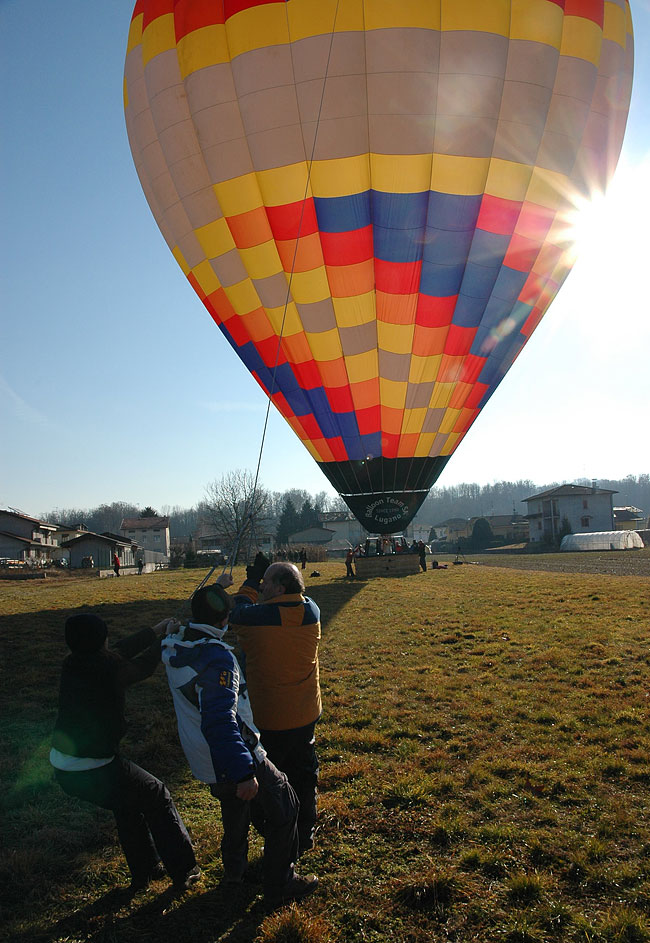
Serena Giacomin (Class Meteo) Gianfranco Orlando(Balloon Team) Luigi Bignami(Mediaset) keep quite the giant.
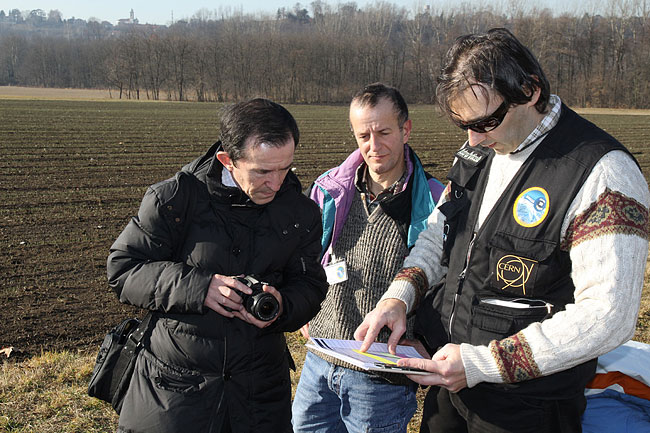
Cesare Guaita(Presidente GAT) Antonio Paganoni(GAT) e Marco Arcani (GAT-Astroparticelle) checking for first results.

|
Aerostat onboard instruments:
|
Pilota: Ernesto Merz, CEO Pilot instructor and chief flight instructor (www.balloons.ch)
Technical coordination: Marco Arcani
Scientific supervisor: Dr. Cesare Guaita, Gruppo Astronomico Tradatese president.
Press releases and TV videos |
|
External links VIDEO: |
External links press: |
| RSI1 (11.01.2012) | TicinoOnline |
| Class Meteo (11.01.2012) | RSI |
| Ticino Online video (11.01.2012) | |
| Italia1 (12.01.2012) | Varese news |
| Class Meteo (12.01.2012) | Class Meteo |
| Luigi Bignami (youtube) | Cronache dal Seprio |
| RAI 3 (16.01.2011) | La prealpina 13.01.2012 |
| Class Meteo (19.01.2012) | La settimana 13.01.2012 |
| RAI 3 (04.2.2012) Settimanale | |

![]() Terra Mater Factual Studios is a producer of documentaries with international appeal, many of which run on well known television channels. For the documentary "Inferno in the sky" about the Sun and the cosmic rays they have included some shots of the VHANESSA expedition.
Terra Mater Factual Studios is a producer of documentaries with international appeal, many of which run on well known television channels. For the documentary "Inferno in the sky" about the Sun and the cosmic rays they have included some shots of the VHANESSA expedition.
| Photo Gallery |
Photo Gallery prequel: |
|
| Press release 2011 |
| Press release 2012 |
View Volo VHANESSA map in another window. |
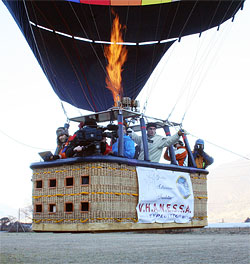
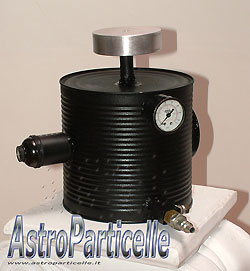
Working remake, of one of the electroscopes used, among 1911 and 1913, from Victor Hess to detect cosmic rays.
VHANESSA on Nuovo Orione magazine
La rivista Nuovo Orione di Aprile,
dedica copertina e articolo alla nostra spedizione sui raggi cosmici.
La trovate in edicola:
Physics World published online the best readers images:
astrophotography-readers-pictures
6.04.2013 VHANESSA on Astroparticle Physics
Il libro AstroParticelle 26.09.2013 - Un viaggio scientifico tra i raggi cosmici raccontato attraverso la storia, le invenzioni i rivelatori e gli osservatori; senza trascurare gli effetti che essi producono coinvolgendo numerose discipline scientifiche tra cui astrofisica, geofisica e paleontologia. |
Accedi | Registrati